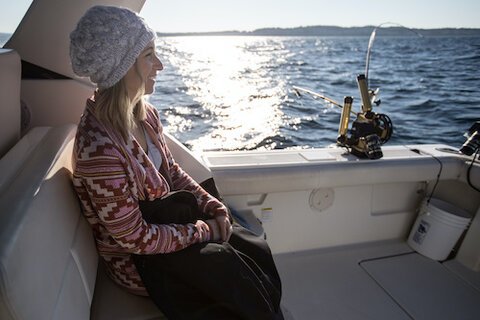Avoiding collisions on the water differs in many ways from avoiding collisions while driving in your car. The one contributing factor which is similar between boats as compared to automobiles is SPEED. It has been statistically proven that the number of collisions between vehicles, be they of the marine or roadway type, are reduced as speed is reduced.
Although the newer high powered boats can reach speeds comparable to those of an automobile, there are no seat belts or brakes on most boats. Boats can either alter course or reverse their engines. Similar to the rules of the road used to prevent collisions on our nations highways, there are navigation rules which are used to prevent collisions on our nation’s and the world’s waterways.
The U.S. Coast Guard’s Navigation Rules (International-Inland) publication can be ordered by calling the U.S. Government Printing office at (202) 783-3238. (You can also view them here) The 36 rules and five annexes contained within this publication are specifically designed to help you prevent vessel collisions. All mariners are required to know and responsibly apply these navigation rules when operating their vessels. Some of the most important rules contained within this publication are summarized below.
Rule - 2, Responsibility, requires that due regard shall be given to all dangers of navigation and collision. This rule allows the mariner to depart from the rules as necessary to avoid the immediate danger of collision. This rule is often applied when the risk of collision between three or more vessels may occur. It is the mariner’s responsibility to take the necessary actions to avoid a collision.
Rule - 4 requires that every vessel shall at all times maintain a proper lookout using sight and hearing as well as by all available means appropriate in the prevailing circumstances so as to make a full appraisal of the situation and of the possible risk of collision.
Rule - 6 requires that every vessel shall at all times proceed at a safe speed so that she can take proper and effective action to avoid collision and be stopped within a distance appropriate to the prevailing circumstances and conditions. In determining safe speed the following factors shall be among those taken into account: the visibility, traffic density, maneuverability of the vessel with special reference to stopping distance and turning ability, at night the presence of background light such as from shore lights, the state of the wind, sea, current, proximity of navigational hazards, and the draft in relation to the available depth of water. Additionally, vessels with operational radar must use that radar to its fullest extent to determine the risk of collision.
Rule - 7 Risk of Collision, states that every vessel shall use all available means to determine if risk of collision exists; if there is any doubt, assume that it does exist. Risk of collision shall be deemed to exist if the compass bearing from your vessel to an approaching vessel does not change. Constant bearing decreasing range (CBDR) is the term we use to describe this situation. Collision risk may sometimes exist even when appreciable bearing change is evident, particularly when approaching a very large vessel or a vessel towing or when approaching a vessel at very close ranges
Rule 8, Action to Avoid Collision, provides specific guidance on how to maneuver your vessel so as to avoid a collision. Changes in course and speed shall be large enough so as to be readily apparent to the other vessel. If there is sufficient sea room, alteration of course alone may be the most effective action to avoid a close quarters situation provided that it is made in good time, is substantial and does not result in another close quarters situation. If necessary to avoid collision or allow more time to assess the situation, a vessel shall slacken her speed or take all way off by stopping or reversing her propulsion. A vessel which is required not to impede the passage of another vessel shall take early and substantial action to allow sufficient sea room for the passage of the other vessel.
Rule 9, Narrow Channels, states that a vessel proceeding along the course of a narrow channel or fairway shall keep as near to the outer limit of the channel which lies on her starboard (right) side as is safe and practicable, A vessel less than 20 meters in length or sailing vessel shall not impede the passage of a vessel, which can safely navigate only within the narrow channel.
Rule 14, Head-On Situation, states that vessels which are approaching head-on shall alter course to starboard so each will pass port to port.
Rule 15, Crossing Situation, states that when two power driven vessels are crossing so as to involve risk of collision, the vessel which has the other vessel on her starboard side shall keep out of the way, and shall, if the circumstances of the case admit, avoid crossing ahead of the other vessel.
Mariners should not limit their knowledge of the rules to this article. In addition to the rules I have summarized, there are other rules which apply to vessels operating in restricted visibility, rules which prescribe the types of navigation lights and sound signals required by vessels. It is vital that all boat operators become students of the navigation rules and help prevent collisions. I strongly encourage all boaters to complete either the U.S. Power Squadron or U.S. Coast Guard Auxiliary Boating Skills and Seamanship Course. To find out the time and date of the next Coast Guard Auxiliary course offered near you, please call the Coast Guard’s customer service number at 1-800-368-5647. May all your boating be safe!!!!
Provided By Boatsafe.com
By Chief Warrant Officer Jim Krzenski
Commanding Officer, U.S. Coast Guard Station Fort Pierce
See Also:


